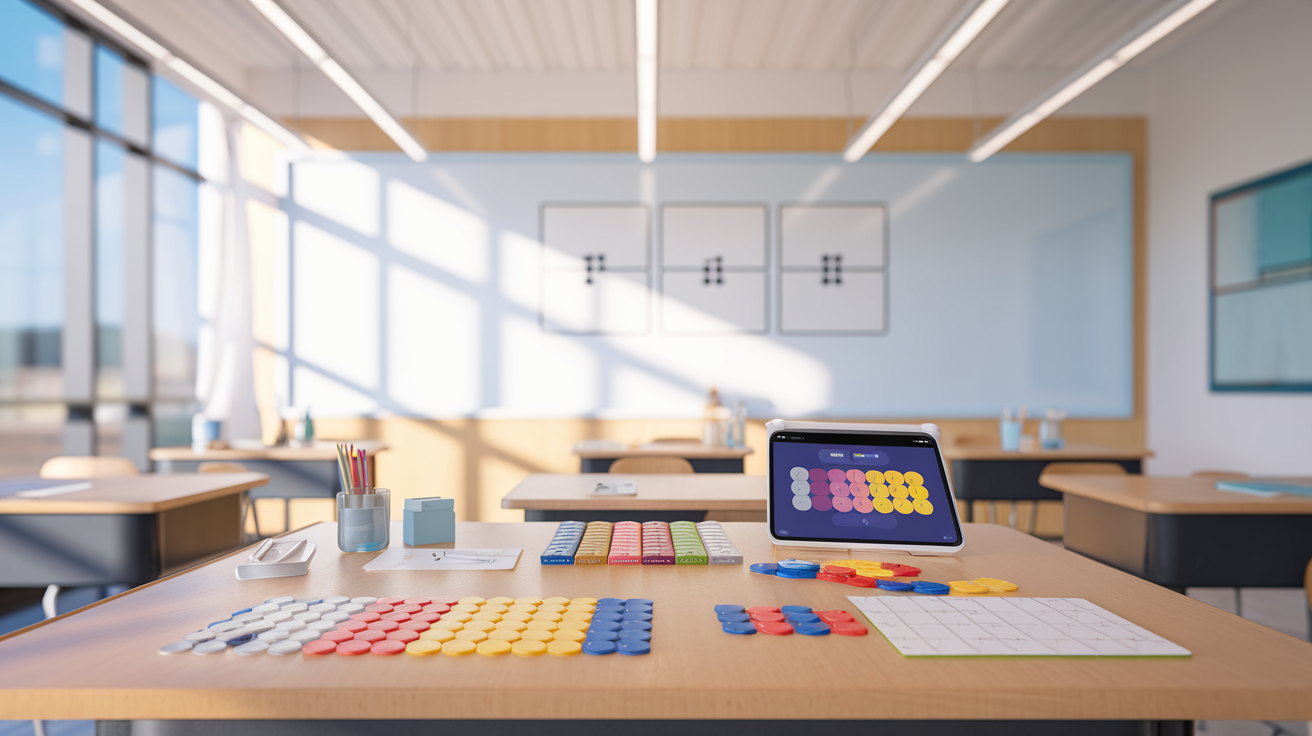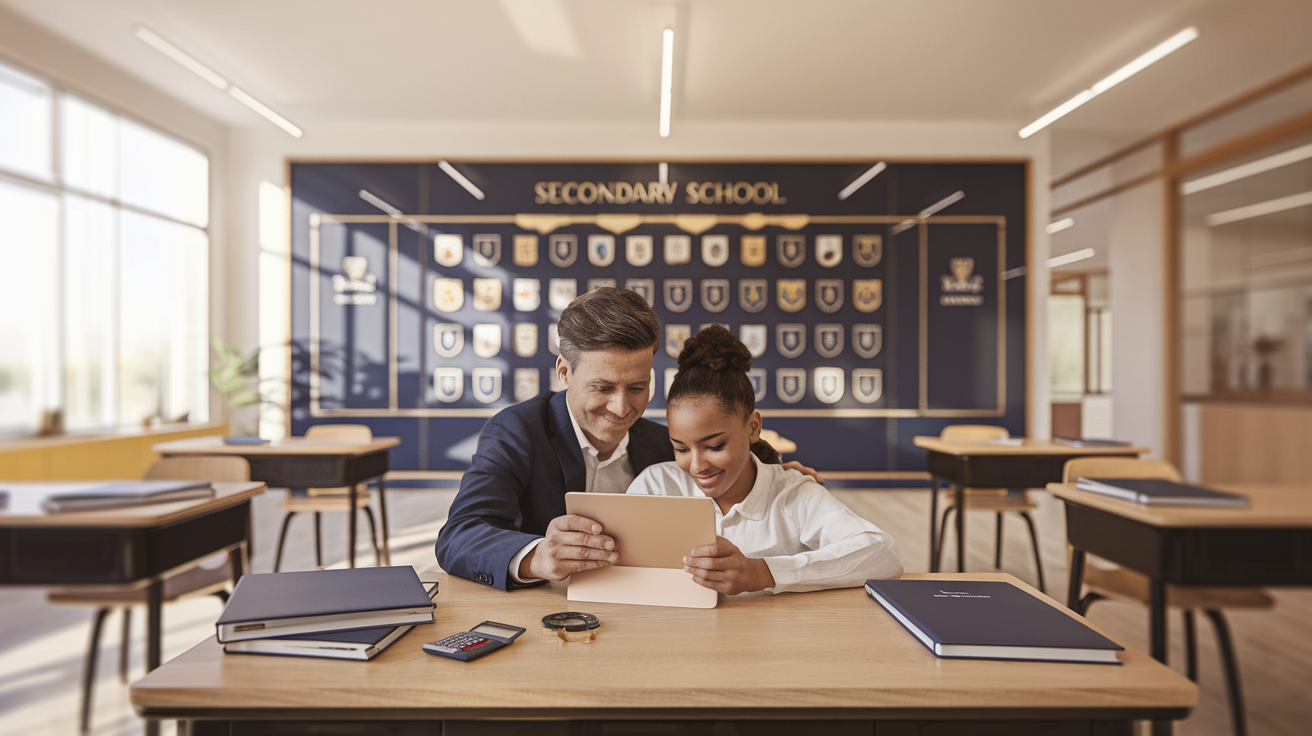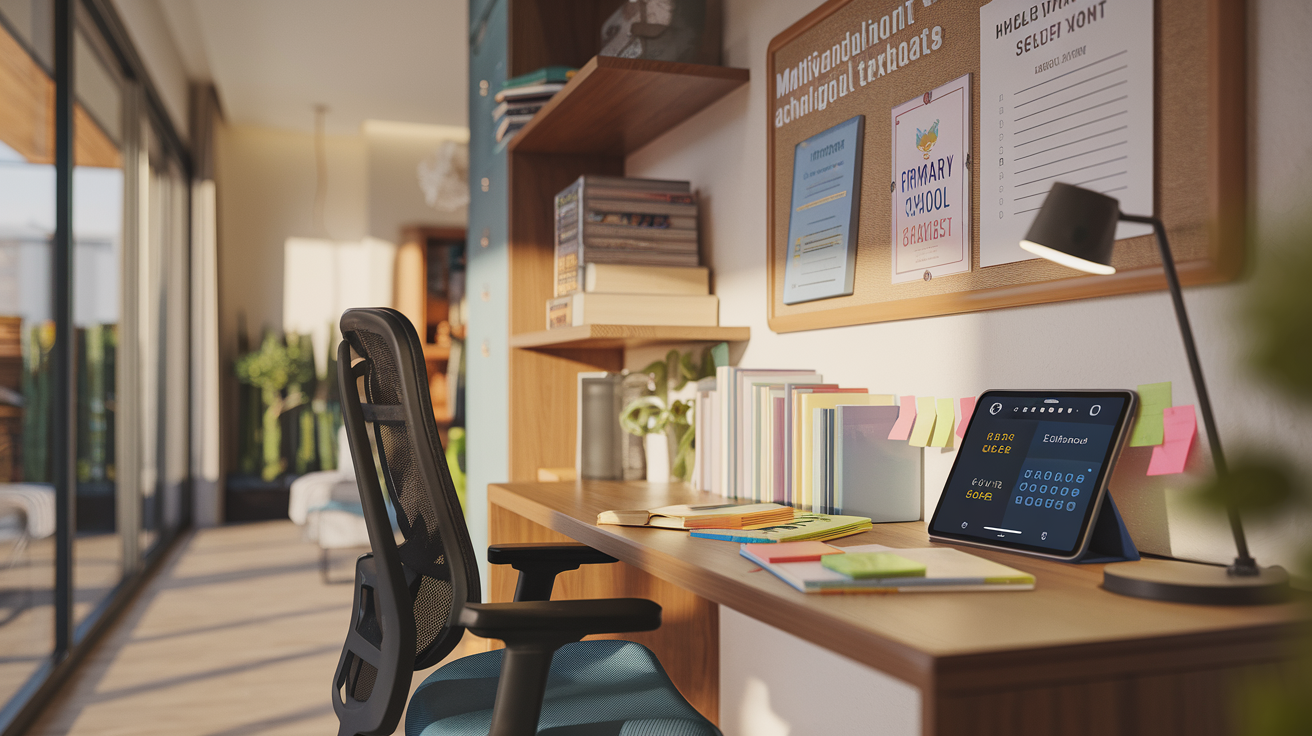- Jun 17, 2025 -
Top Strategies to Master Study Corners Before the PSLE

- Understanding the Importance of a Dedicated Study Space
- Selecting the Optimal Location
- Essential Elements of an Effective PSLE Study Corner
- Organization Strategies for Maximum Efficiency
- Smart Technology Integration
- Personalization Techniques That Enhance Learning
- Implementing Effective Scheduling Systems
- The Role of Parent Involvement
- Common Mistakes to Avoid
- Evolving the Study Corner as PSLE Approaches
The Primary School Leaving Examination (PSLE) represents a significant milestone in every Singaporean student’s educational journey. As parents and educators, we understand the pressure and importance placed on this critical examination. While quality instruction and consistent practice are vital components of PSLE preparation, one often overlooked aspect is the physical environment where learning takes place.
At EduFirst Learning Centre, with 25 locations across Singapore and over a decade of educational expertise, we’ve observed firsthand how a well-designed study corner can dramatically impact a student’s focus, retention, and overall performance. Our experience working with small class sizes of 4-8 students has shown that personalized learning environments contribute significantly to academic success.
This comprehensive guide explores proven strategies to create and optimize study corners specifically designed to enhance PSLE preparation. From selecting the ideal location to incorporating effective organizational systems, we’ll provide actionable insights that address the unique challenges of Primary 6 students preparing for this pivotal examination.
Understanding the Importance of a Dedicated Study Space
Research consistently demonstrates that dedicated learning environments significantly impact cognitive function and academic performance. For PSLE candidates, having a consistent study corner creates a psychological association between the space and focused learning, activating what psychologists call “state-dependent memory.”
The brain forms connections between physical surroundings and the information being processed. When a child studies in the same location regularly, merely sitting in that space triggers the brain to enter a focused learning state more quickly. This cognitive conditioning becomes especially valuable during the intensive months of PSLE preparation.
Beyond cognitive benefits, a dedicated study corner also establishes clear boundaries between academic work and leisure time. This separation helps Primary 6 students develop healthier study habits and reduces the mental fatigue that often accompanies prolonged PSLE preparation. By creating a space exclusively associated with productive learning, parents help their children mentally separate “study mode” from “relaxation mode.”
Our experience at EduFirst shows that students with well-established study corners typically demonstrate improved concentration spans and greater persistence when tackling challenging PSLE concepts. The physical environment essentially becomes a non-verbal cue that supports the mental preparation necessary for effective learning.
Selecting the Optimal Location
The location of your child’s PSLE study corner significantly influences its effectiveness. While Singapore’s housing constraints may limit options, several key factors should guide your selection process.
First, prioritize natural light whenever possible. Studies show that exposure to natural daylight improves alertness, mood, and cognitive performance. Position the study desk near a window, but be mindful of direct sunlight that might cause glare on screens or papers. If natural light is limited, invest in full-spectrum lighting that mimics daylight and reduces eye strain during evening study sessions.
Noise management represents another critical consideration. The ideal study corner should be situated away from high-traffic areas of your home, such as the kitchen or living room. For families living in smaller HDB flats, this might require creative scheduling of study periods during quieter times. Alternatively, noise-cancelling headphones can create an acoustic barrier when physical separation isn’t feasible.
Temperature and airflow also impact cognitive function more than many parents realize. Avoid placing the study corner near air conditioning vents that might create uncomfortable drafts. The optimal temperature for cognitive performance typically falls between 22-25°C. Proper ventilation helps maintain oxygen levels and prevents the drowsiness that can occur in stuffy environments.
Finally, consider proximity to resources your child might need during study sessions. While the study corner should be removed from distractions, it shouldn’t be so isolated that your child must frequently leave to access reference materials, the toilet, or healthy snacks. A balanced approach ensures the space promotes focused work while remaining practical for daily use.
Essential Elements of an Effective PSLE Study Corner
Creating an effective PSLE study corner requires thoughtful consideration of several essential components. Each element serves a specific purpose in supporting your child’s learning process and overall well-being during this demanding academic period.
Proper Seating and Desk Setup
Ergonomics should never be an afterthought when preparing for long study sessions. An appropriately sized chair that supports proper posture prevents physical discomfort from distracting your child. The ideal chair allows your child’s feet to rest flat on the floor with knees bent at approximately 90 degrees. The desk height should permit your child’s forearms to rest comfortably while typing or writing without hunching shoulders.
For growing children, consider adjustable furniture that can adapt to their changing physical needs. Remember that PSLE preparation spans many months, during which physical growth continues. A chair that fits perfectly in January might be uncomfortably small by September.
Lighting Requirements
Beyond natural light, task lighting deserves careful attention. A desk lamp with adjustable brightness helps maintain consistent illumination regardless of the time of day or weather conditions. Position the lamp to minimize shadows on work surfaces, ideally with the light source coming from the opposite side of your child’s dominant hand to prevent casting shadows while writing.
Be wary of lighting that creates screen glare, especially as digital resources increasingly feature in PSLE preparation. Adjustable lighting allows your child to modify illumination based on the task at hand—brighter for detailed work like mathematics calculations, slightly dimmer for reading comprehension exercises.
Storage Solutions
Effective storage prevents visual clutter that can impede concentration. Vertical storage options like bookshelves or wall-mounted organizers maximize floor space in smaller Singaporean homes while keeping reference materials accessible. Consider transparent storage containers that allow your child to see contents without opening each container, saving precious study time.
Subject-specific storage systems help PSLE candidates mentally compartmentalize their studies. Separate folders, binders, or digital folders for English, Math, Science, and Mother Tongue create visual and physical boundaries between subjects, reducing cognitive overwhelm when tackling multiple subjects during revision periods.
Organization Strategies for Maximum Efficiency
Organization transcends mere tidiness—it’s about creating systems that reduce friction in the learning process. For PSLE candidates, efficient organization eliminates unnecessary decision-making and streamlines access to essential materials.
Implement a color-coding system that extends across physical and digital resources. Consistent color associations (for example, blue for Mathematics, green for Science) help your child quickly identify and retrieve needed materials. This visual organization system reduces transition time between subjects and reinforces mental categorization of information.
Establish clear zones within the study corner for different activities: a primary workspace for active learning, a reference zone for textbooks and notes, and a testing zone for practice papers. This spatial organization helps compartmentalize different learning modes and creates physical movement between tasks, which can refresh attention.
Consider vertical space utilization through wall planners or whiteboards that display long-term goals alongside immediate tasks. At EduFirst, we’ve observed that students who visually track their progress maintain better momentum throughout the PSLE preparation period. The visual reminder of completed work builds confidence while keeping upcoming deadlines visible.
Smart Technology Integration
Technology, when thoughtfully integrated, can significantly enhance PSLE preparation. However, it requires intentional management to ensure it serves as a tool rather than a distraction.
Consider dedicated educational devices whenever possible. A tablet or computer used exclusively for learning creates a psychological boundary that separates educational technology from entertainment devices. If dedicated devices aren’t feasible, browser extensions or parental controls can temporarily limit access to distracting websites during designated study periods.
Digital organization deserves the same attention as physical organization. Create structured file systems for digital notes, practice papers, and resources. Cloud-based storage solutions allow accessibility from multiple locations—particularly valuable for students who divide study time between home and student care facilities like those provided by EduFirst.
Integrate productivity tools appropriate for Primary 6 students. Simple timers for Pomodoro-style focused study sessions (typically 25 minutes of focus followed by 5-minute breaks) help maintain concentration without overwhelming young learners. Digital flashcard applications can transform passive revision into active recall practice, which research shows significantly improves retention.
Personalization Techniques That Enhance Learning
While fundamental principles guide effective study space design, personalization addresses the unique learning preferences of each PSLE candidate. Thoughtful customization creates an environment where your child feels both comfortable and motivated.
Consider your child’s learning style when personalizing the study corner. Visual learners benefit from wall space devoted to concept maps, diagrams, and color-coded information. Auditory learners might need a space that accommodates voice recordings or verbal practice without disturbing others. Kinesthetic learners require room for movement and manipulation of physical learning materials.
Incorporate meaningful motivational elements that resonate with your child’s personal interests and aspirations. These might include inspirational quotes from admired figures, visual representations of goals (such as images of a desired secondary school), or a progress tracker that visualizes achievements. The key is selecting motivational elements that genuinely connect with your child rather than imposing adult preferences.
Allow for some personalization within organizational boundaries. While the study space should remain primarily functional, small expressions of personality through desk accessories or stationery choices give your child a sense of ownership over the space. This ownership translates into greater willingness to spend time in the study corner.
Implementing Effective Scheduling Systems
The physical study corner should be complemented by temporal organization through effective scheduling. For PSLE candidates, time management becomes increasingly critical as the examination approaches.
Develop a visual scheduling system that aligns with your child’s cognitive development. Most Primary 6 students benefit from schedules that balance structure with flexibility. A weekly planner displayed prominently in the study corner helps your child visualize time commitments and build autonomy in managing study sessions.
Integrate both fixed and flexible study periods into the schedule. Fixed periods should correspond to your child’s peak cognitive hours—for some children, this means early morning sessions before school, while others concentrate better in the afternoon. Flexible study periods accommodate unexpected events and prevent the discouragement that occurs when rigid schedules inevitably face disruption.
At EduFirst, our educators recommend incorporating deliberate breaks and transitions into study schedules. The growing brain requires regular cognitive rest to consolidate information. Short 5-minute breaks every 25-30 minutes help maintain focus, while longer breaks between subjects facilitate mental transitions. These scheduled breaks aren’t indulgences—they’re essential components of effective cognitive work.
The Role of Parent Involvement
Parent involvement significantly influences the effectiveness of a PSLE study corner, but finding the right balance requires thoughtfulness. The goal is supporting your child’s autonomy while providing necessary guidance.
Consider establishing a daily or weekly check-in routine that takes place in the study corner. These brief meetings might review upcoming assignments, discuss challenges, or celebrate progress. Regular check-ins communicate your support without constant hovering that might undermine your child’s developing independence.
Help your child develop metacognitive awareness by modeling reflection practices. Rather than simply asking about completed work, encourage your child to assess what strategies are working well and what might need adjustment. Questions like “What helped you understand this concept?” or “What might make tomorrow’s study session more effective?” develop self-awareness that extends beyond PSLE preparation.
Recognize when to arrange additional support. Despite the best home study environment, some concepts require professional guidance. EduFirst’s small class sizes of 4-8 students provide the personalized attention that complements home study efforts, especially for challenging PSLE concepts.
Common Mistakes to Avoid
Even well-intentioned parents sometimes make counterproductive decisions when creating PSLE study corners. Awareness of common pitfalls helps avoid undermining your child’s preparation efforts.
Avoid creating overly rigid environments that feel clinical or punitive. Study corners that resemble examination halls rather than supportive learning spaces can increase anxiety and negative associations with learning. While organization matters, some personality and comfort should remain to make the space inviting.
Beware of proximity to high-distraction areas or items. Placing a study desk facing the television or in direct view of gaming consoles creates unnecessary temptation. Similarly, allowing mobile phones in the study corner introduces powerful distractions that few Primary 6 students can consistently resist.
Don’t underestimate the importance of physical comfort. Furniture that causes discomfort after 30 minutes will significantly limit productive study time. While overly comfortable seating (like beds or plush chairs) reduces alertness, properly supportive seating enhances it. The goal is creating conditions where your child’s attention can remain on learning rather than physical discomfort.
Finally, avoid the mistake of changing systems frequently. Children thrive on consistency, and repeatedly altering organizational systems creates unnecessary cognitive load. Make thoughtful initial decisions, then allow time for adaptation before making significant changes to the study environment.
Evolving the Study Corner as PSLE Approaches
The ideal study corner should evolve throughout the PSLE preparation journey to address changing needs as the examination approaches. Strategic adaptations help maintain effectiveness as pressure intensifies.
During early preparation phases (12-6 months before PSLE), the study corner should emphasize concept mastery and knowledge building. Visual aids, reference materials, and concept maps might feature prominently during this period. As the preliminary examination period approaches (3-6 months before PSLE), transition toward a greater emphasis on practice papers and timed exercises. The physical environment might shift to include a more prominent timer and space for completed practice papers organized by performance level.
In the final months leading to PSLE (1-3 months before), the study corner should support efficient review and targeted practice. Consider incorporating a systematic error log where your child tracks and categorizes mistakes from practice papers. This visual record helps prioritize revision efforts on areas of greatest need rather than subjects where mastery is already demonstrated.
Throughout these transitions, maintain core elements that provide consistency and security. While the function of the space may evolve, familiar elements like the same desk, chair, and basic organization systems provide stability during an inherently stressful period.
Creating an effective study corner represents a significant investment in your child’s PSLE success. While no physical environment can replace the importance of consistent effort and quality instruction, the right study space removes unnecessary obstacles and optimizes conditions for productive learning.
The strategies outlined in this guide draw from educational research and EduFirst’s extensive experience supporting thousands of Singapore students through PSLE preparation. By thoughtfully implementing these recommendations, you create more than just a physical space—you establish conditions that support your child’s cognitive, emotional, and academic development during this pivotal educational transition.
Remember that the ultimate goal extends beyond PSLE performance. The study habits, organizational skills, and self-management abilities your child develops during this period will serve them throughout secondary school and beyond. By investing time in creating an effective study corner now, you’re helping build foundations for lifelong learning success.
Need Expert Guidance for PSLE Preparation?
At EduFirst Learning Centre, our experienced educators specialize in helping Primary 6 students achieve their full potential. With small class sizes of 4-8 students, we provide the personalized attention your child needs to excel in the PSLE.
Contact us today to learn more about our PSLE preparation programs across 25 locations islandwide.



